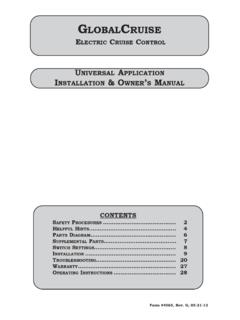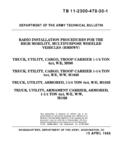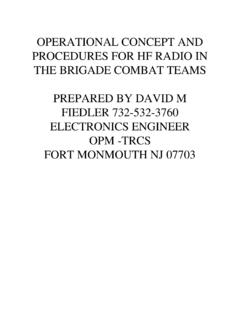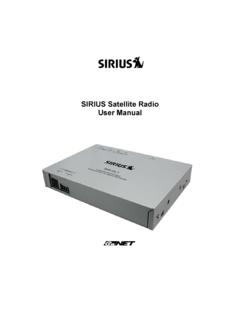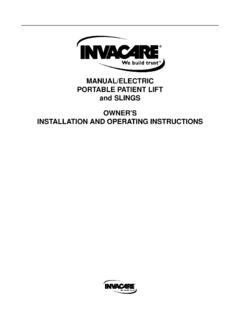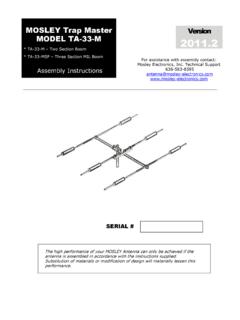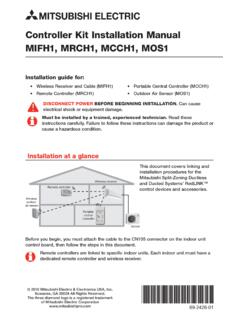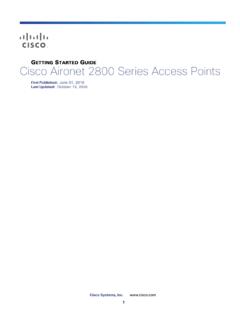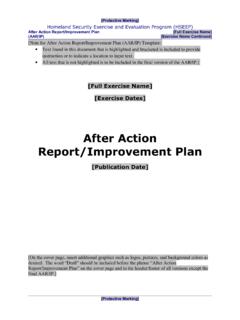Transcription of FOREwORd - Marine Radio Licence
1 AUSTRALIAN MARITME COLLEGE 1 FOREwORdThis handbook is intended for the guidance of Radio operators:(a) On Australian vessels which are voluntarily fitted with Marine VHF radiotelephony and Marine VHF radiotelephony with digital Selective Calling (dSC) capability.(b) On Australian vessels which are compulsorily fitted with Marine VHF radiotelephony and Marine VHF radiotelephony with digital Selective Calling (dSC) is the recommended textbook for candidates undertaking the Marine Radio Operators VHF Certificate of Proficiency (MROVCP) and requirements outlined in the handbook are based on the International Radio Regulations formulated by the International Telecommunication Union (ITU)
2 , on provisions governing the use of Radio transmitters in Australia laid down in the Radiocommunications Act 1992, and on radiocommunications station Licence conditions set by the Australian Communications and Media Authority (ACMA).Careful observance of the procedures covered by this handbook is essential for the efficient exchange of communications in the Marine radiocommunications service, particularly when the safety of life at sea is concerned. Special attention should be given to those sections dealing with distress, urgency and safety. It should be noted that no provision of this handbook, the International Radio Regulations, or the Radiocommunications Act 1992, prevents the use by a vessel in distress of any means at its disposal to attract attention, make known its position and obtain , no provision of this handbook, the International Radio Regulations, or the Radiocommunications Act 1992, prevents the use by vessels engaged in search and rescue operations of any means at their disposal to assist a vessel in distress.
3 This booklet is based on extracts from the Marine Radio Operators Handbook 2008 and reflects the new arrangements for maritime communication stations from 1 July 2002. These arrangements include substantial changes to the frequencies monitored by these stations for distress and safety, and changed requirements for ships wishing to participate in the AUSREP reporting also contains information about the Global Maritime distress and Safety System (GMdSS) Marine communications techniques which are available for use by small vessels in Australia. The system uses advanced technology and automation to ensure that search and rescue authorities, as well as ships in the vicinity of an emergency, are alerted reliably and rapidly.
4 Both satellite and terrestrial communications form essential components of the Australian Maritime College (AMC) acknowledges the contribution of ACMA, the Australian Maritime Safety Authority (AMSA), the Bureau of Meteorology, Telstra, and the Governments of the States and the Northern Territory in the preparation of this Handbook. Marine VHF Radio OPERATORS HANdBOOK 2 pageIntroductIon to Marine VHF operator requirements ..4 Radio Licence Information ..4 Operator Qualifications ..4 Marine VHF ..4 General ..4 Frequency of Marine VHF ..4 Frequency Spectrum.
5 4 Range of VHF ..5 Typical VHF Ranges..5 VHF Marine Radio equipment ..6 Principle of Operation ..6 the Major Parts of Radio equipment ..6 General ..6 Transceiver controls ..6 General Care and Maintenance ..7 VHF Marine repeaters ..7 Principle of Operations ..7 Repeater Channels ..8 Use of VHF Marine Repeaters ..8 Stations for Marine communications ..8 Limited Coast Stations ..8 Station Identification ..8 operating procedures ..9 Authority of the Master ..9 Priority of Communications ..9 Protection of Channels ..10 Secrecy of Communications.
6 10 watch keeping ..10 Silence Periods ..10 Unnecessary Communications ..10 Test Transmissions ..10 Log keeping ..10 Phonetic Alphabet and Figure Code ..10 Control of Communications ..10 revision Questions ..11callIng procedures routine calling procedures ..12 Routine Calling ..12 Replying to Calls ..12 Repeating Calls ..13 difficulties in establishing contact ..13 distress calling procedures ..14 Responsibility ..14 Authority to Transmit a distress Call and Message ..14 Channel for distress ..14 distress Alert ..14 The distress Signal.
7 14 The distress Call ..14 The distress Message ..14 distress Position information ..15 distress Traffic ..15 Acceptance of distress Calls and Messages .15 Authority to Transmit a distress Acknowledgement ..15 Obligation to Acknowledge Receipt of a distress Message ..15 Acknowledgement of Receipt ..16 Control of distress Traffic ..16 Resumption of Restricted working ..17 Resumption of Normal working ..18 Transmission of distress Relay ..18 The Urgency Signal ..19 The Safety Signal ..20 revision Questions ..21 dIgItal SelectIVe callIng (dSc) General.
8 22 dSC Capable Equipment ..22 Station Identity ..22 Transmission of a dSC alert ..23 CONTENTS AUSTRALIAN MARITME COLLEGE 3 Information Contained in a dSC Alert ..23 dSC Alert Formats ..23 distress Alert procedures ..23 distress Position Information ..23 dSC Alert Information ..23 Transmission of a dSC distress Alert ..24 Repetition of distress Alerts .. 24 Acknowledgement of a VHF dSC distress Alert ..24 Cancellation of an inadvertent distress Alert ..24 revision Questions ..25 SurVIVal craFt eQuIPMent emergency Position Indicating Radio Beacons (ePIrBs) ..26 General.
9 26 Local User Terminals ..26 Type of EPIRB ..26 Identification of a 406 MHz EPIRB ..26 The COSPAS-SARSAT International System .26 Methods of detection and location ..27 The 406 MHz EPIRB ..27 detection by Satellite ..27 activation oF tHe 406 MHz ePIrB ..28 General ..28 Accidental activation of an EPIRB ..28 Servicing of EPIRBs ..28 Stowage of EPIRBs ..28 revision Questions ..29 Search and rescue transponders ..30 General ..30 Positioning of the SART ..30 SART Operations ..30 Location distances ..30 revision Questions ..31 Power SuPPlIeS The Marine Battery.
10 32 Battery Construction ..32 Cell Voltage ..32 Cell Capacity ..32 Battery Connection ..32 Battery Hazards ..33 Essential Battery Maintenance ..33 Battery Cleanliness ..33 Electrolyte Level ..34 Correct Charging.. 34 Measuring the Specific Gravity ..34 Measuring the On-Load Terminal Voltage ..35 Loss of Capacity ..35 Maintenance Free Batteries ..35 Connection of batteries during emergencies ..35 revision Questions ..36 MIScellaneouS Suggested format for a Radio logbook Page ..37 table of transmitting Frequencies in the VHF Maritime Mobile Band.
